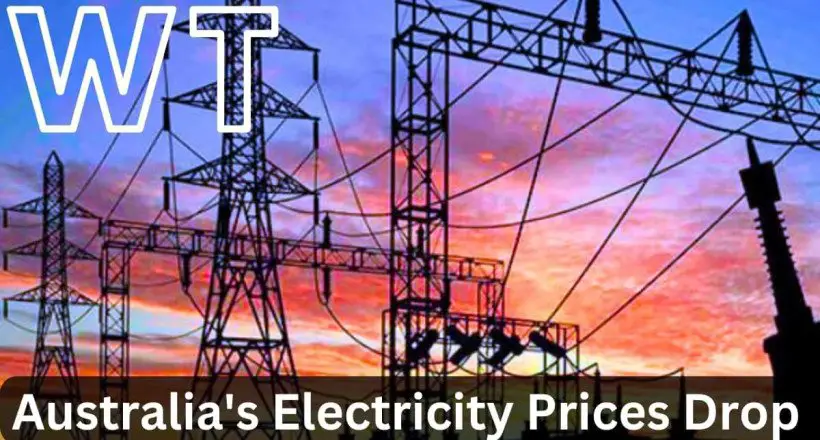Wholesale Electricity Prices Plummet by 59 percent in Australia as Households Grapple with Soaring Bills

Australia - A Ray of Hope Amidst Soaring Power Bills: In a surprising turn of events, Australia has witnessed a remarkable 59% drop in wholesale electricity prices over the past year, offering a glimmer of hope to consumers who have been burdened with surging power bills. The decline comes despite retail prices soaring by as much as 30% for households in eastern Australia.
Renewables and Coal-Fired Generation Lead the Charge
According to the Australian Energy Market Operator (AEMO), the wholesale electricity prices dipped to $108 per megawatt hour during the June quarter, a significant contrast to the $264 per megawatt hour average observed last year when the National Electricity Market faced suspension. The reduction can be attributed to several factors, including an increase in black coal-fired electricity generation driven by fewer outages in New South Wales and the growing contribution of renewable energy sources, particularly wind and solar power. These, along with
improved generation capacity and less volatile market conditions, exerted downward pressure on wholesale prices.
Impact on Retail Prices and Household Bills
Despite the substantial fall in wholesale prices, households have yet to experience relief from their escalating power bills. As per the latest energy report, power bills for Australian households surged by 20 to 30% in some states starting July 1. Energy analysts argue that this increase is a delayed response to the previous year's wholesale price surge, as retailers needed time to recover the incurred costs.
Looking Ahead: Prospects for the Future
While the sudden decline in wholesale electricity prices has brought optimism, experts maintain that it may not immediately translate into reduced retail bills. The wholesale electricity market operates a year in advance of the retail market, creating a lag in the effects of price fluctuations. The energy regulator, AER, has already set the default market offer for the current financial
“ Stay ahead of the news with WSN TIMES. We delivers the latest, most accurate and relevant information on politics, business, sports, entertainment and more. Get informed, always. ”
thus negating any immediate impact on retail prices.
The Path Towards Australia's Energy Future
Despite the current challenges, Daniel Westerman, CEO of AEMO, remains hopeful about Australia's energy future. He outlined four pillars on which the nation's energy transformation will be built. Firstly, low-cost renewable energy from sources such as solar, wind, and water will be harnessed, serving as Australia's most economical energy option. Secondly, firming generations, including batteries, pumped hydro, and flexible gas generation, will be employed to stabilize energy supply during peak demands. Thirdly, the expansion of the transmission network will facilitate the connection of new energy sources to urban centers. Lastly, a resilient grid capable of running on entirely renewable energy will be developed.
Winter Bill Relief Remains Elusive
Unfortunately, the decline in wholesale prices is unlikely to offer immediate relief to consumers during the winter months. The delayed nature of the wholesale market means that the benefits of lower
prices may take up to a year to be reflected in retail prices. As Tony Wood, an energy analyst from the Grattan Institute, puts it, the current scenario is a "horrible coincidence" where the costs incurred by generators to stabilize the system are being recovered while wholesale prices are falling. To see tangible relief in retail bills, other factors influencing the market between now and the next year will play a crucial role.
A Long-Awaited Respite
For now, Australia celebrates the much-needed decline in wholesale electricity prices, offering hope for a more sustainable energy future. While immediate relief for households may be elusive, the strides made in the renewable sector and coal-fired generation signal a positive shift towards a greener and economically viable energy landscape for the nation. As Australia continues to navigate the complexities of the energy market, the prospect of a more stable and affordable power supply remains on the horizon.









